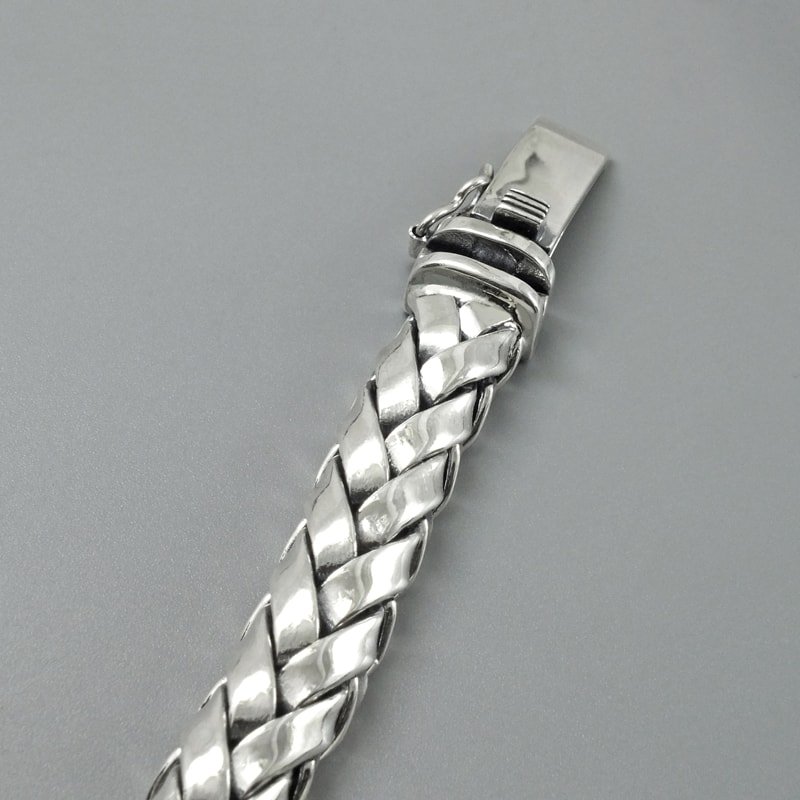Sterling silver has been used to make jewelry for centuries. It is a popular choice because it is affordable and looks beautiful. Sterling silver is made up of 92.5% silver and 7.5% copper. This makes it a durable metal that doesn’t easily tarnish. However, there are many counterfeit items on the market, so it’s important to know whether your sterling silver jewelry is real. In this blog post, we will discuss the signs to look for to determine whether your sterling silver jewelry is authentic!
But before we do that, let’s address the most important question in the room, why do you need to be able to tell if your silver jewelry is a real 92.5? Why does 92.5 matter so much? Sterling silver jewelry, made with 92.5% silver and 7.5% copper, is much more durable and resistant to tarnish than other types of silver jewelry that use lower-grade silver. In addition, the additional copper alloy helps give sterling silver its signature shine, making it a popular choice for jewelry.
Now that you know why 92.5 is so important let’s discuss the signs to look for when verifying if your silver jewelry is real.
The Hallmark Test: The easiest way to check if your silver jewelry is real 92.5 is to look at the hallmark stamped on it. Sterling silver should have a marking of “92.5” or “925.” Some pieces might also say “ster” or “sterling.” If you don’t see any of these markings, then it’s likely that the piece is not made from genuine sterling silver.
The Magnet Test: Another easy test for verifying the authenticity of your sterling silver jewelry is to use a magnet. Real sterling silver won’t be attracted to a magnet and should slide away from it when you bring it close. However, some counterfeit items are made with magnetic metals, so this method isn’t foolproof.
The Acid Test: The acid test is the most reliable way to verify if your jewelry is made from sterling silver. This involves using a chemical solution to compare the metal against a sample of genuine sterling silver. If it doesn’t react in the same way, then it’s likely that your piece isn’t real 92.5. Of course, this type of test should be conducted by an expert and can cause permanent damage to the item if not done correctly, so proceed with caution.
The Easiest Test: The easiest way to determine whether your silver is real is to rub it against a white cloth. Real sterling silver will leave a black mark on the cloth due to the copper alloy present in the metal. It’s important to note that some counterfeit jewelry can also leave a black residue, so this isn’t an entirely reliable test either.
The Weight Test: Last but not least, the weight test. Genuine sterling silver should feel heavier than other types of metal. However, this is a difficult test on your own, so it’s best to take your piece to a jeweler who can compare its weight with other items made from sterling silver.
The Scientific Test: Lastly, there is a scientific test involving an X-ray fluorescence spectrometer. This type of device can determine the exact composition of the metal and accurately verify if your jewelry is made from sterling silver. Again, this type of testing should be done by a professional and may not be available in all areas.
Are these the only way to tell if silver is original? No, these are just a few alternatives that can help you identify whether your piece is real. Ultimately, the best way to ensure you get genuine sterling silver jewelry is to buy from trusted retailers who offer warranties and guarantees on their items. In addition, it’s also important to look out for signs of counterfeiting, such as incorrect hallmarks or misspelled words. Counterfeit silver jewelry is becoming more common, so it pays to research before making purchases.
Hopefully, these tips have helped you understand how to tell if your sterling silver jewelry is real 92.5 or not. Always look for hallmarks and be cautious when using any acid or chemical testing method, as it can damage your valuable item!
If you’re still unsure about whether your piece is genuine or not, it’s best to seek out professional advice from an expert who specializes in evaluating jewelry pieces of this kind. You can find professional jewelry appraisers almost anywhere who are experienced in identifying and authenticating sterling silver. When selecting an appraiser, ensure that you know their credentials. Something to look out for is that they must be a Certified Gemologist Appraiser or CGA. These certifications are given by organizations such as the American Society of Appraisers (ASA) and the National Association of Jewelry Appraisers (NAJA).















